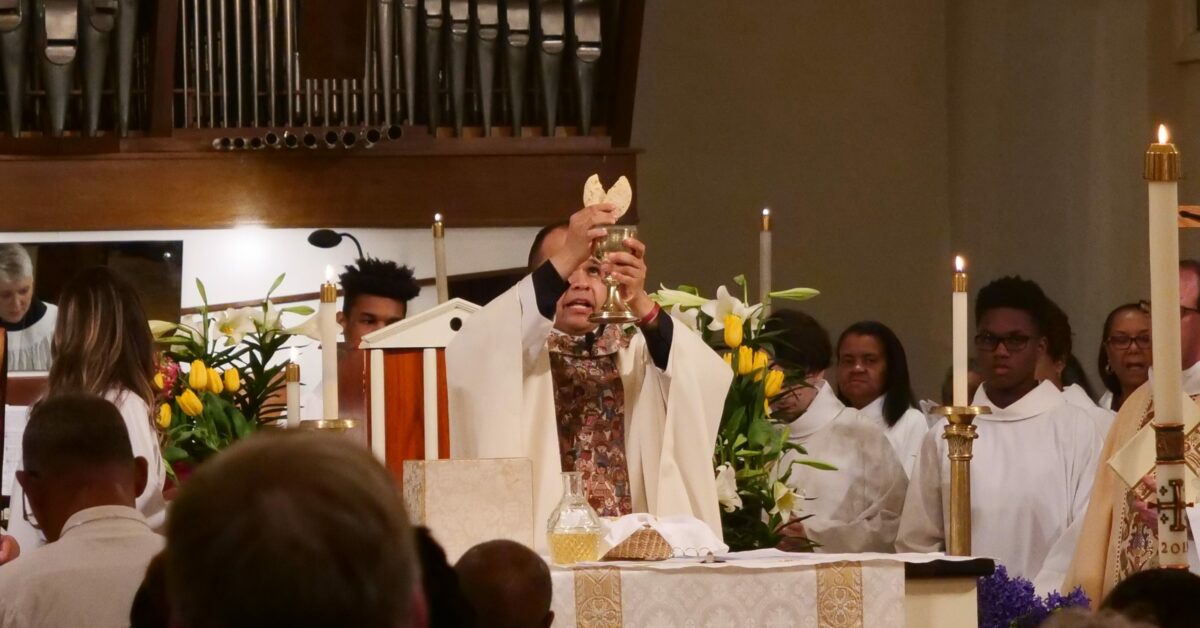Being with Christ Jesus (That’s Catechesis)
In the last two chapters of Your Parish is the Curriculum Diana Macalintal explores the shape of teaching or catechesis in faith formation. At its essence the catechesis is all about the experience of being with Christ Jesus through Word and Sacraments in the Christian community and reflection upon that experience. It is catechesis that focuses on conversion, being brought to faith. This is what Aidan Kavanagh and others have referred to as primary theology. Faith seeking understanding, or secondary theology, follows upon the primary catechesis and is part of lifelong discipleship. All Christians are theologians because they are believers in God and they have journeyed through that primary catechesis at the catechumenate’s center. Macalintal has an effective description of baptized theologians as they serve to expose catechumens to the life of faith: they are translators. She says, they “stand on the boundary between our profound experience of the mystery of God and the real-life human situation in which we live. The theologian stands in the middle to ‘co-relate’ the border between the divine and all of humanity’s deepest questions” (98). All the baptized are mystagogues facilitating the catechumens reflections on the mysteries, that is, the experience of God’s self-revelation in promise, grace and mercy through His Son Jesus Christ by the Spirit. All the baptized encourage the catechumens’ reflection on what they have heard and seen, but especially the team (which she discusses in chapter two) involved in faith formation: sponsors, catechists, pastors, etc…
In this catechetical reflection, questions allow inquirers and catechumens to explore what they are hearing and seeing as God reveals himself in Christ in the church’s life. Questions such as: “How have you encountered Christ in the Word this week? In the liturgy this week? How has God been present in your life this week?” Questions such as these allow a deeper exploration of faith itself, or of coming to faith in God through Christ. Guiding these experiences and reflections is the proclaimed and written Word of God. Macalintal helpfully outlines a process of reflection for the catechumens with six parts: Encounter (participating in worship and the parish’s life); Recollection (recalling how one encountered Christ in that event); Reflection (How did the encounter make one feel? Think?); Catechesis (Catechists and sponsors bring the Word and theological reflection to bear on the experience); Connection (How does this experience foster reflection on what is going on in the world around us and shape our witness?); Conversion (In light of this experience and reflection, “How will I commit to living as a disciple of Christ this week in the world?” [104]). What Lutherans might traditionally consider the “meat” of the teaching is that catechetical section. But it is still milk! No solid theological foods yet. It is still reflection on faith itself and the implications of conversion to the life of faith for the catechumen. It is still a very initial encounter with the Word.
In chapter seven Macalintal turns toward the need for customizing catechesis to the individual catechumen. Sponsors and catechists play a primary role here because they know the individual catechumens best. One of the most helpful (among many) parts of the book comes at this point. Macalintal outlines two catechetical paths that are interdependent but distinct: the Ritual path and the Catechetical path. The Ritual path is the formation that happens through the crossing of the various ritual stages that the catechumen experiences. They focus on the gradual transition of the person in terms of their order/place within the Christian community: from inquirer to catechumen to neophyte. Formation happens through the Word and ritual action in the liturgies of the church. The second path she labels the Catechetical path. This path is less structured and attends to the level of faith instruction in the Word that the individual person has received. For example, those who have not been baptized are at the beginning of the Ritual path, but they may have extensive knowledge about the Christian faith and so would be further along the Catechetical path. On the other hand, another person may have been baptized and so has already moved through the entire Ritual path, but has little knowledge of the Christian faith and so is at a very elementary stage in the Catechetical path. Most often Lutheran congregations give strong attention to the Catechetical path, but fail to give sufficient attention to the Ritual path. In addition, it is vital on the Catechetical path to remember that that is still introductory Christian teaching (primary proclamation and initiatory catechesis), not the depth of formation (including Scripture study, theological/confessional study, spiritual formation, etc…) that will come after they are baptized. Because people are at various places on these two paths our faith formation practices need to shape their formation experience according to where they are at.
In conclusion Macalintal asks, “What if? What would happen if we made the RCIA a process that really took place within the community of the faithful?” (130) And so I put the same question to us Lutherans: What if we actually use the formation practices of the catechumenate? Perhaps, as Macalintal indicates, “We will find our way together to a door that can change everything” (131).
